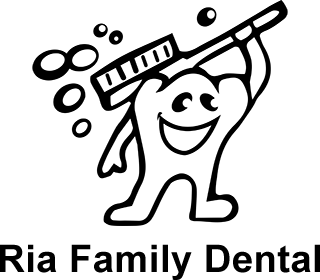 When people talk about their dental treatment, they often use the terms dental therapist and dental hygienist as though they are interchangeable.
When people talk about their dental treatment, they often use the terms dental therapist and dental hygienist as though they are interchangeable.
In reality, they are quite a bit different, with different skills and responsibilities.
Both dental hygienists and dental therapists were specially trained to work alongside patients, and both can help you with your treatment, and many are qualified in both fields.
However, they are not precisely the same, and the difference can be significant in many countries. But in Australia, the differences no longer matter.
Because although this article will describe the responsibilities of therapists and hygienists, in Australia, they are no longer separate roles, having been combined into the role of the oral health specialist, which combines both functions.
First, we’ll look at the traditional roles of hygienist and therapist; then we’ll take a look at the capable hybrid that Australian dentistry has created.
What does a dental hygienist do?
Dental hygienists are experts in all aspects of preventative dental care and treatment of gum disease. They can show you proper home habits and help you keep your gums and teeth healthy.
They can also do a dental cleaning, often called a ‘scale and polish’, which removes plaque and tartar. But their most important role is teaching you the best ways to keep plaque from forming on your teeth.
Plaque, a sticky coating that is continuously adhering to your teeth, can lead to tartar, gum disease, and cavities.
Hygienists also give general advice on avoiding tooth decay and provide you with information about a dental-healthy diet.
Dental hygienists also perform X-rays, which the dentist uses to assess problems and decide on treatments. Dental hygienists can also apply fluoride varnishes, place fissure sealants, and administer fluoride.
What does a dental therapist do?
A dental therapist can do everything a dental hygienist can do, and more. They can perform some dental treatments that we often think of as done by a dentist.
These treatments include fillings, baby-tooth extraction, placement of crowns on baby teeth, and other procedures.
If an adult tooth does not need a treatment that involves the tooth nerve, a dental therapist can restore or fill any part of the tooth. The therapist does not do restorations.
Therapists can also place local anaesthetics on the gums or administer nitrous oxide to patients. They can also sometimes remove infected or broken teeth, as well as remove stitches from healed wounds.
Job responsibilities of a dental therapist include:
- Polishing a patient’s teeth using mechanical tools
- Inserting temporary caps to protect the pulp
- Replacing gauze and dressing after teeth are removed
- Cleaning the area around a cavity to prepare it for filling
The Situation in Australia
Australia no longer trains a separate category of dental therapist and hygienist, having chosen to train oral therapists.
These therapists are trained as both dental therapists and hygienist, and they focus on health promotion and prevention of disease.
Oral therapists are trained at the university level, which means there is a mandatory requirement for secondary schooling, including a range of prerequisites that are different from state to state and territory to territory.
Because the prerequisites and training are different at the state/territory level, and even from university to university, the rule is that once an oral health therapist graduates, they can only perform those techniques and treatments in which they have been trained.
Oral Health Therapists are trained to perform tasks, including:
- Dental examinations
- Educate and motivate children and the community
- Cleaning teeth
- Restoring teeth
- Extracting deciduous (baby) teeth
- Administration of local anaesthetic
- Taking radiographs (X-rays)
- Preventive treatments, including fluoride applications, fissure sealants, oral hygiene instruction
- Taking impressions for mouthguards
- Educate school canteens about health foods
These therapists use many different tools and technologies, combining the tools and techniques of hygiene and therapy, to accomplish their dental tasks.
These tools include:
- X-ray equipment,
- Hand-powered tools such as drills and polishers
- Computers and printers to amass and store data.
What Australia has done is to assess the skills and efficiencies offered by dental therapists and dental hygienists, and combine them into one role that combines all the good points of both job descriptions.
This means, that when you visit Ria Family Dental, not only will you have one of the most excellent dentists available in Australia, you will also have an in-surgery staff with university-trained skills of the highest order. That is the best of ALL dental worlds!
Your Dental Family in Yeronga
At Ria Family Dental in Yeronga, we offer comprehensive care that addresses your short and long-term dental care needs.
We provide an honest, judgment-free environment in which we practice convenient, comfortable, and conservative care designed to maximise your smile and oral health!
We are located at 1/451B Fairfield Rd, with Yeronga station and bus stops nearby, as well as convenient store-front parking. For the convenience of our patients, we offer early evening hours on most weeknights.
Yeronga dentist also serves the local communities in Yeerongpilly, Annerley, Tarragindi, Rocklea, Fairfield, Tennyson, Graceville, Chelmer and Moorooka.
For more information, give us a call on 0451 359 356 or use our online booking service here!
We are located at 1/451B Fairfield Rd in Yeronga.

